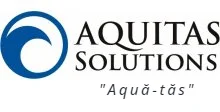I recently attended MaximoWorld, and it was amazing. While the conference was near Disney World, I had to assure my kids that it might as well have been in Omaha for as much sight-seeing as I would do. As with previous conferences, content overload hit by day 1. I had 22 pages of notes, ideas and questions by the end of day 2. And by Day 3 I was overwhelmed.
In every presentation and coffee break I saw professionals, peers and presenters all asking:
- Am I doing enough to increase the reliability of my plant?
- How are you not doing this process automatically in Maximo?
- Isn’t it obvious what your next step should be in your reliability journey?
NO!!! No, it wasn’t.
The amount of ideas and feelings of inadequacy started to make my head spin. Every time I turned around I heard something I knew could make an impact in our programs back at home. I spent the trip home feeling like a failure in my efforts as a reliability leader.
I got back to the office, and for the first couple of weeks I struggled with fitting more into my day. I started working on a new idea I had. I outlined a project plan from something I saw at the conference. I looked at getting a team together to try and update a business process from a session I attended. None of it was working. It felt like the nursery time story about the little Dutch boy and the dam – fix one hole and 3 more popped up.
Then it hit me… the pace at which I wanted to make changes was not sustainable.[1] We needed to cut out what was not adding value to the day to make room for what would. What really got me was that I already had the inspiration for what I wanted to do in my office. I have a quote from Bruce Lee hanging in my office that one of my martial arts instructors shared with me:
It’s not the daily increase but daily decrease. Hack away at the unessential.
That’s exactly what we needed to do – Hack away at the unessential. Remove the effort that didn’t directly help improve our reliability programs or support our tactical plans, then replace them with something that did have a positive effect on our work.
I spent the next week taking an inventory of everything I do, everything my team does, and what is required by our maintenance teams. This idea came from my Getting Things Done (GTD) background. You can’t understand the work you have in front of you unless you know all the work you have in front of you. This actually made me feel worse because I was able to see everything I needed to work on, everything I wanted to work on, and everything I wasn’t working on. The upside was that I knew this list was going to get smaller.
The game plan was pretty simple:
- Find 3 things you’re going to stop doing, publicly state that these are not being done anymore, and then just don’t do them anymore.[2]
- Identify 3 things you reasonably believe you can accomplish in the next 3 months. The idea is to find short term wins that won’t require a larger team or a large capital
- Take a week to flesh out which of these 3 things will most successfully get done in the next 3 months and give you the biggest win. Then put your effort into this one single objective until it is
Goal: Remove 3 things you shouldn’t be doing and replace them with 1 thing you should be doing.
We identified 3 quick wins for our team that would take a couple of hours a week off our support work:
- We reset our support hours for non-emergency items. [3]
- We set up the user-managed password question/answer to allow users to reset their own passwords. [4]
- We created a handful of automation scripts to add warnings to users about data. [5]
We are now in the process of identifying the big win we want to complete in the next 3 months. We are eliminating the time/energy/resources for activities that weren’t adding value to our day and giving us enough time and space to adopt new initiatives we believe will add value. When we have our 3 wins, we’ll do it again. This cycle embraces the idea that making changes in how we do our work is a journey, not a race – there is no finish line, just interesting stops and milestones along the way.
[1] No, it literally hit me. A pile of books and papers on the back of my desk fell over and hit me on my head when I was digging through my laptop bag.
[2] This one can be tough when an activity was publicly perceived to be “owned” by you, which is why you need to publicly announce you’re not doing it anymore.
[3] Unless Maximo is down we’re not worried about it until tomorrow.
[4] Yes, some of us still don’t have Maximo accounts tied in via LDAP.
[5] For example, you add a restriction on a status change. So now users know why a record won’t move from WAPPR > APPR.
About the Author:
Jason has been in the engineering and reliability field for over 25 years. He is currently the Asset & Reliability Engineering Manager for Agropur, a leading cheese and dairy processor in North America. Jason has been working with the IBM Maximo application for over 15 years, focusing on business process development and reporting. Jason is a husband and father of two boys. He enjoys cycling, reading, movies and is working towards his 2nd degree black belt in Tae Kwon Do.



